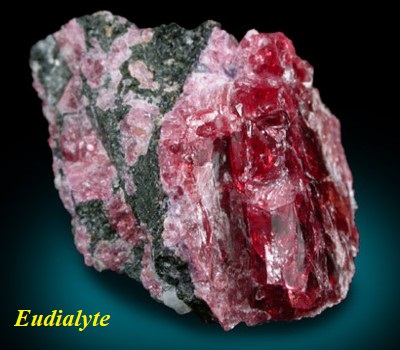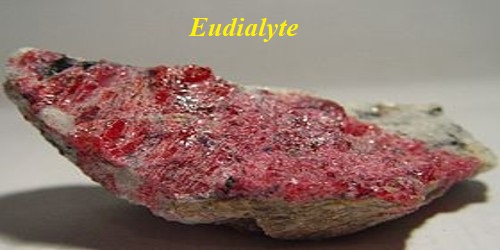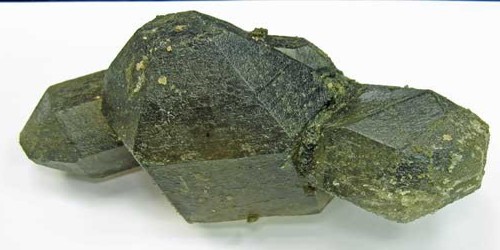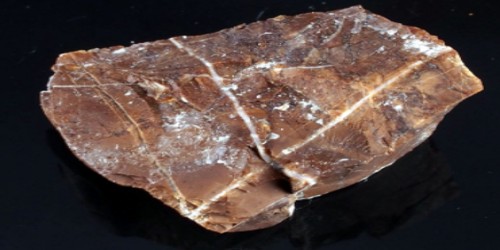Eudialyte, whose name derives from the Greek phrase ‘eu dialytos’, meaning “well decomposable”, is a somewhat rare, nine-member ring cyclosilicate mineral, which forms in alkaline igneous rocks, such as nepheline syenites. It is from the cyclosilicate mineral family and is considered a minor ore of zirconium. Its name alludes to its ready solubility in acid.
Eudialyte was first described in 1819 for an occurrence in nepheline syenite of the Ilimaussaq intrusive complex of southwest Greenland. This stone is usually red-orange, cherry red, orange, pink, brownish red, brown, yellowish brown, yellow, green, or violet.
General Information
- Category: Cyclosilicate
- Formula: Na15Ca6(Fe,Mn)3Zr3SiO(O,OH,H2O)3(Si3O9)2(Si9O27)2(OH,Cl)2
- Crystal system: Trigonal
- Crystal class: Hexagonal scalenohedral (3m)

Properties
- Color: Red, magenta, brown; also blue and yellow
- Crystal habit: Crystals short rhombohedral to long prismatic, granular, irregular masses
- Fracture: Uneven
- Tenacity: Brittle
- Mohs scale hardness: 5 – 6
- Luster: Vitreous
- Streak: White
- Diaphaneity: Transparent to translucent
- Specific gravity: 2.74–3.10
- Optical properties: Uniaxial (+/-)
Occurrence
It can be found in Canada and Russia. There are also Eudialyte deposits which can be found in Madagascar, Greenland, Norway, and the USA. It is found associated with other alkalic igneous minerals, in addition to some minerals common to most igneous material in general.
Associate minerals include: microcline, nepheline, aegirine, lamprophyllite, lorenzenite, catapleiite, murmanite, arfvedsonite, sodalite, aenigmatite, rinkite, låvenite, titanite and titanian magnetite.
Uses of eudialyte
Eudialyte is used as a minor ore of zirconium. Another use of eudialyte is as a minor gemstone, but this use is limited by its rarity, which is compounded by its poor crystal habit. These factors make eudialyte of primary interest as a collector’s mineral.
Information Source:
















